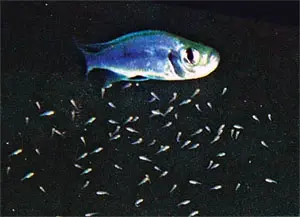
Life is tough for fish, especially for fry. Take the Caspian roach, for instance; during spawning, it releases around 100,000 eggs, but only about 15 of those will grow into adult fish. The rest perish.
In contrast, the catfish living along the shores of West Africa have a better survival rate—they stick together in schools and collectively fend off predators. When a large fish appears, the fry quickly form a tight ball. Not just any random pile, but with their tails tucked in and sharp snouts facing outward. This formation sends any predator running! The ball resembles a sea urchin, complete with venomous spines, which is best left alone.
This unique and rather rare survival strategy among animals is a fascinating example of adaptation.
